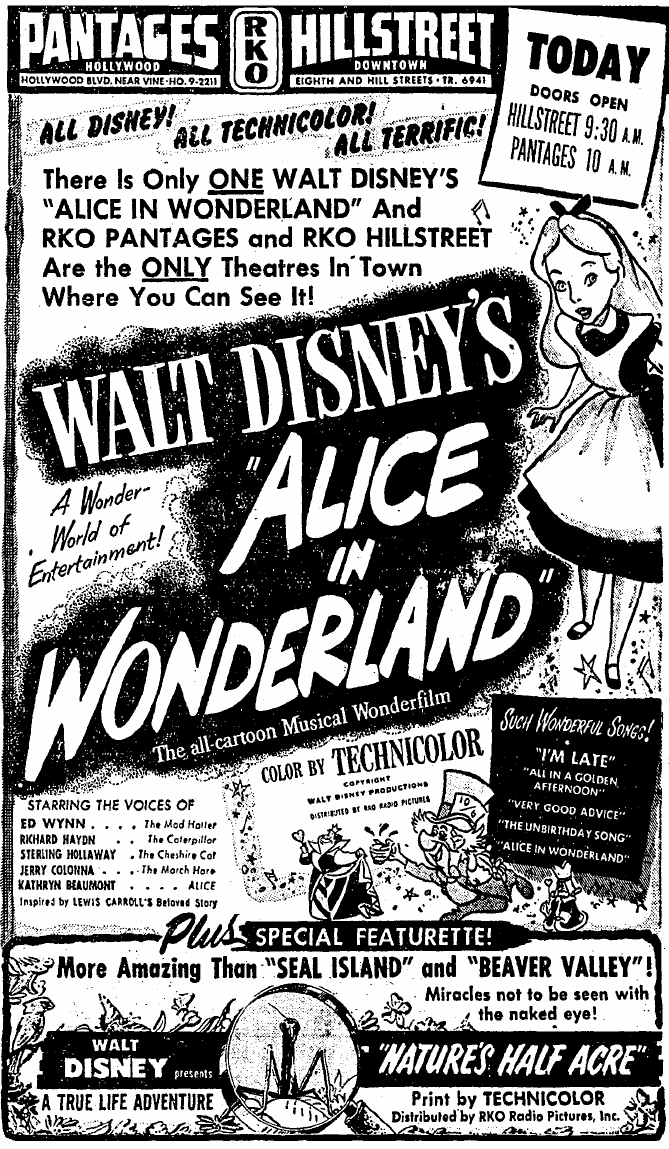Adapted from an article by David Prescott
The other "Alice In
Wonderland" released in
1951
was an American-British-French co-production,
which mixed live action with
animated puppets. Lou Bunin
began filming in 1946 in France.
Combining his fascination with sculpture and
puppeteering with his abilities as an artist, Bunin set
out to re-create Carroll's story on film using animated
puppets of his own creation interacting with live
actors. The puppets, which were actually only seven
inches tall, were sized to match the live actors through
stop action frame-by-frame editing. This technique,
Bunin felt, was the most appropriate way to deal with
the Carroll story, which mixes human and fantastic
characters.But Bunin's "Alice in Wonderland" was
pulled from distribution shortly after its release,
as a result of an unusual series of events involving
Disney, which released its totally
animated production of the Carroll classic
the same week Bunin released his.
A bitter legal battle with
Disney had developed during the
production of the Bunin film.
Disney charged that Bunin was trying to profit from
the Disney Studio's name and publicity.
In addition, Disney claimed ownership of the Carroll
story, a claim disputed by Bunin and ultimately
invalidated by a federal judge in New York who ruled
that Carroll's work was in the public domain.
Disney then used his considerable power and influence
to prevent Bunin from producing his "Alice" in
Technicolor. Bunin was forced to use
Anscocolor, an inferior color process, and this
held up his production long enough for Disney to
complete his version of "Alice." The
timing couldn't have been worse for Bunin,
since his version of Alice and
Disney's version were released the same week.
Disney trumpeted his version as the "One and Only
Walt Disney's Alice in Wonderland" in ads placed
side-by-side with Bunin's. Bunin says his picture was
not shown in many theaters because theater owners feared
that if they showed Bunin's version and not Disney's,
then the studio would not allow them to show future
Disney releases. Bothered by the color quality of his
film, and the refusal of theater owners to show his
picture, Bunin withdrew his film from distribution.
Bunin's timing didn't improve over
the years. The day he reintroduced his "Alice" in 1985
was the same day Disney released "The Black Cauldron." |

